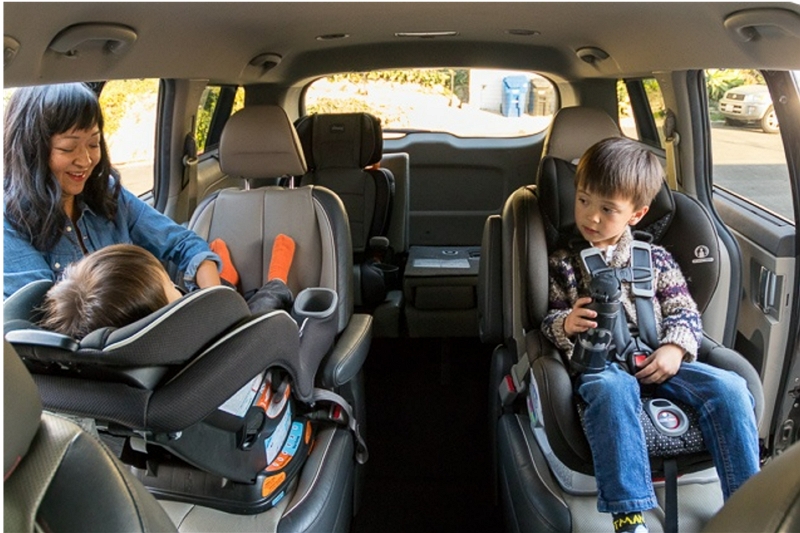How long baby in infant car seat? The American Academy of Pediatrics has several guidelines on car seats for infants. According to the AAP, “the safest place for an infant in a motor vehicle is the rear-facing position, in a separate child safety seat (CSS) appropriate to their weight and size.
Likely to be severely injured when rear-facing, even if they meet all other criteria for forward-facing car seats. According to Dr Ben Hoffman, “A child is five times safer riding rear-facing than forwarding facing”.

A 2008 review of studies conducted by researchers at The Children’s Hospital of Philadelphia concluded that “all currently available evidence suggests a significant increase in the risk of serious injury or death” for babies who ride face forward before age two and if they stay rear-facing until they are at least two years old or reach per cent less the limits of their convertible seat.
In Sweden, children remain facing backwards till age four. The current law in France says kids need to be forward-facing by 12 months; however, most French parents wait about 18 months before turning them forward because it’s simply not safe before then.
Can my 7-year-old use a backless booster seat?
Yes, as long as your child is over 40 lbs and between 38-57 inches tall.
The American Academy of Pediatrics recommends that all children under the age of 13 use a booster seat. In an accident or sudden stop, kids above this height could be at risk for serious injury without one. Booster seats can also help protect against head injuries caused by hitting the back of the vehicle’s front seat on impact.
Car accidents are more likely to occur in school zones – which means you should especially pay attention when driving around these areas with younger passengers! A good rule of thumb: If they reach their car’s safety belt buckle (at shoulder level) while sitting on a booster seat, then it might be time to consider switching
What is the weight requirement for a backless booster seat?
A backless booster seat is typically recommended for children who weigh at least 40 pounds, according to the NHTSA. Children less than 40 pounds may be able to use a belt-positioning booster seat (with harness straps) or convertible car seats with higher weight limits before transitioning into a vehicle seat belt alone.
A child should remain in their current restraint until they are too tall for it, which is usually when their shoulders meet the top of an adult’s shoulder while standing straight up and down.
Once this occurs, they have reached the maximum height limit set by both the manufacturer and federal regulations – though if your child weighs more than 100 lbs., he/she may not fit well in a smaller booster seat due to his/her size.
Are backless booster seats legal?
Backless booster seats are not legal for use in all states. The American Academy of Pediatrics (AAP) recommends children remain rear-facing as long as possible, up to the height or weight limit of their convertible car seat.
Many parents have questions about whether a backless booster is safe but unfortunately, there isn’t good research on this topic that can guide decisions.
It appears that older model backless boosters may be unsafe because they do not adequately position the child’s shoulder belt over his/her pelvic area and instead place it across his/her abdomen which could cause serious injury if you were to get into an accident.
However, newer models are being designed with better safety features so more research needs to be done before we know for sure how these new backless boosters compare to traditional booster seats.
Is it safe for a 10-year-old to ride in the front seat?
A three-year study by the National Highway Traffic Safety Administration (NHTSA) found that children ages 12 to
NHTSA also recommends keeping kids under age 13 out of any seating position except for rear-facing child safety seats while travelling in an automobile.
Does an 8-year-old need a booster seat?
A child under the age of eight years old does not have enough bone density to be restrained properly in a seatbelt alone. A booster seat helps keep them upright, which is safer than having them slump forward or sideways during an accident.
Booster seats also help protect their head and neck from injury by keeping them away from vehicle structures that can cause serious harm during a crash.
According to recent studies, both lap-shoulder belts with high back boosters are generally as safe as using only harnesses for children weighing 40 pounds or more who are at least four feet nine inches tall. If your child weighs less than forty pounds they should ride rear-facing until they reach proper weight levels before riding front-facing.
or kids between one-year-old and six years old, the Institute of Medicine recommends that they ride in a rear-facing car seat until at least two years old or until they reach the highest weight threshold allowed by your car’s manufacturer
That means if you have an infant under twenty pounds, it is safer for them to remain rear-facing in their car seats until age one unless otherwise advised by their paediatrician.
